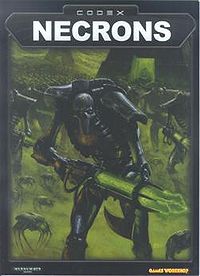
Gothic science fiction
Encyclopedia

Science fiction
Science fiction is a genre of fiction dealing with imaginary but more or less plausible content such as future settings, futuristic science and technology, space travel, aliens, and paranormal abilities...
that, as the name suggests, also involves gothic
Gothic fiction
Gothic fiction, sometimes referred to as Gothic horror, is a genre or mode of literature that combines elements of both horror and romance. Gothicism's origin is attributed to English author Horace Walpole, with his 1764 novel The Castle of Otranto, subtitled "A Gothic Story"...
conventions.
Some of the more obvious examples of the subgenre feature vampire
Vampire
Vampires are mythological or folkloric beings who subsist by feeding on the life essence of living creatures, regardless of whether they are undead or a living person...
s explained in a science fiction context, commonly that vampires are alien
Extraterrestrial life in popular culture
In popular cultures, "extraterrestrials" are life forms — especially intelligent life forms— that are of extraterrestrial origin .-Historical ideas:-Pre-modern:...
s or those infected by a disease as in (Richard Matheson
Richard Matheson
Richard Burton Matheson is an American author and screenwriter, primarily in the fantasy, horror, and science fiction genres. He is perhaps best known as the author of What Dreams May Come, Bid Time Return, A Stir of Echoes, The Incredible Shrinking Man, and I Am Legend, all of which have been...
's novel I Am Legend), or products of parallel evolution (George R. R. Martin
George R. R. Martin
George Raymond Richard Martin , sometimes referred to as GRRM, is an American author and screenwriter of fantasy, horror, and science fiction. He is best known for A Song of Ice and Fire, his bestselling series of epic fantasy novels that HBO adapted for their dramatic pay-cable series Game of...
's novel Fevre Dream
Fevre Dream
Fevre Dream is a 1982 vampire novel written by bestselling novelist George R. R. Martin. It is set on the antebellum Mississippi River beginning in 1857; it has been described by some as "Bram Stoker meets Mark Twain." The book was first published in the U. S. in 1982 by Poseidon Press and still...
) or in (Kate Nevermore's novel Blood of the Living). Some feature entire planets of vampires, or vampire-like creatures (such as the comic book Vampirella
Vampirella
Vampirella is a fictional character, a comic book vampire heroine created by Forrest J Ackerman and costume designer Trina Robbins in Warren Publishing's black-and-white horror comics magazine Vampirella #1 . Writer-editor Archie Goodwin later developed the character from horror-story hostess, in...
).
In his history of science fiction, Billion Year Spree, Brian Aldiss
Brian Aldiss
Brian Wilson Aldiss, OBE is an English author of both general fiction and science fiction. His byline reads either Brian W. Aldiss or simply Brian Aldiss. Greatly influenced by science fiction pioneer H. G. Wells, Aldiss is a vice-president of the international H. G. Wells Society...
contends that science fiction itself is an outgrowth of gothic fiction-- pointing to Mary Shelley
Mary Shelley
Mary Shelley was a British novelist, short story writer, dramatist, essayist, biographer, and travel writer, best known for her Gothic novel Frankenstein: or, The Modern Prometheus . She also edited and promoted the works of her husband, the Romantic poet and philosopher Percy Bysshe Shelley...
's novel Frankenstein
Frankenstein
Frankenstein; or, The Modern Prometheus is a novel about a failed experiment that produced a monster, written by Mary Shelley, with inserts of poems by Percy Bysshe Shelley. Shelley started writing the story when she was eighteen, and the novel was published when she was twenty-one. The first...
as an example." Science fiction is the search for a definition of man and his status in the universe which will stand in our advanced but confused state of knowledge (science) and is characteristically cast in the Gothic or post-Gothic mode." The blend can also be detected quite explicitly in Jules Verne
Jules Verne
Jules Gabriel Verne was a French author who pioneered the science fiction genre. He is best known for his novels Twenty Thousand Leagues Under the Sea , A Journey to the Center of the Earth , and Around the World in Eighty Days...
's novel Le Château des Carpathes.
Other examples of the subgenre feature other traditionally gothic tropes in new settings, such as:
- Damsels in distress in faraway future
- Gothic planetary romance
- Gothic futuristic romance

